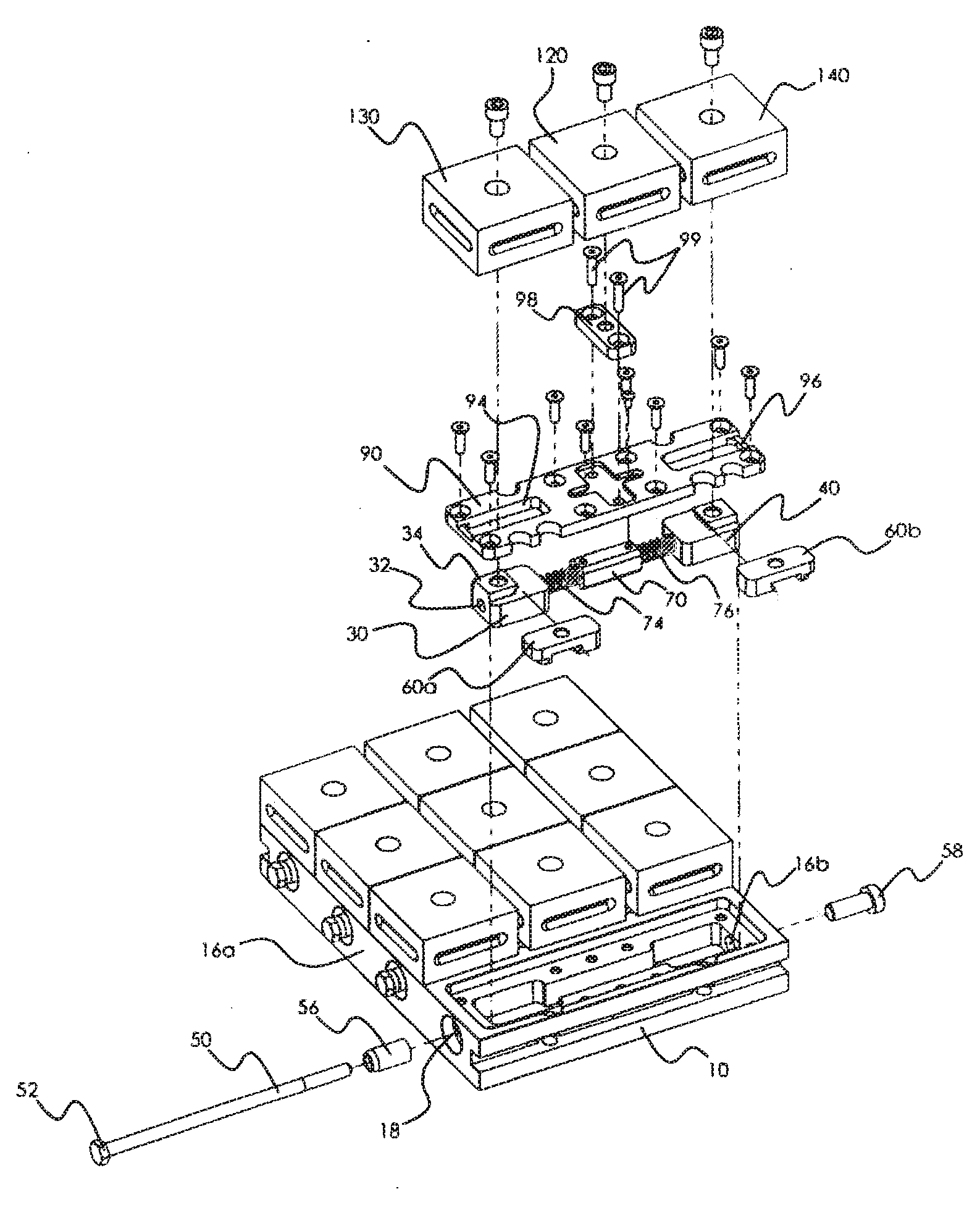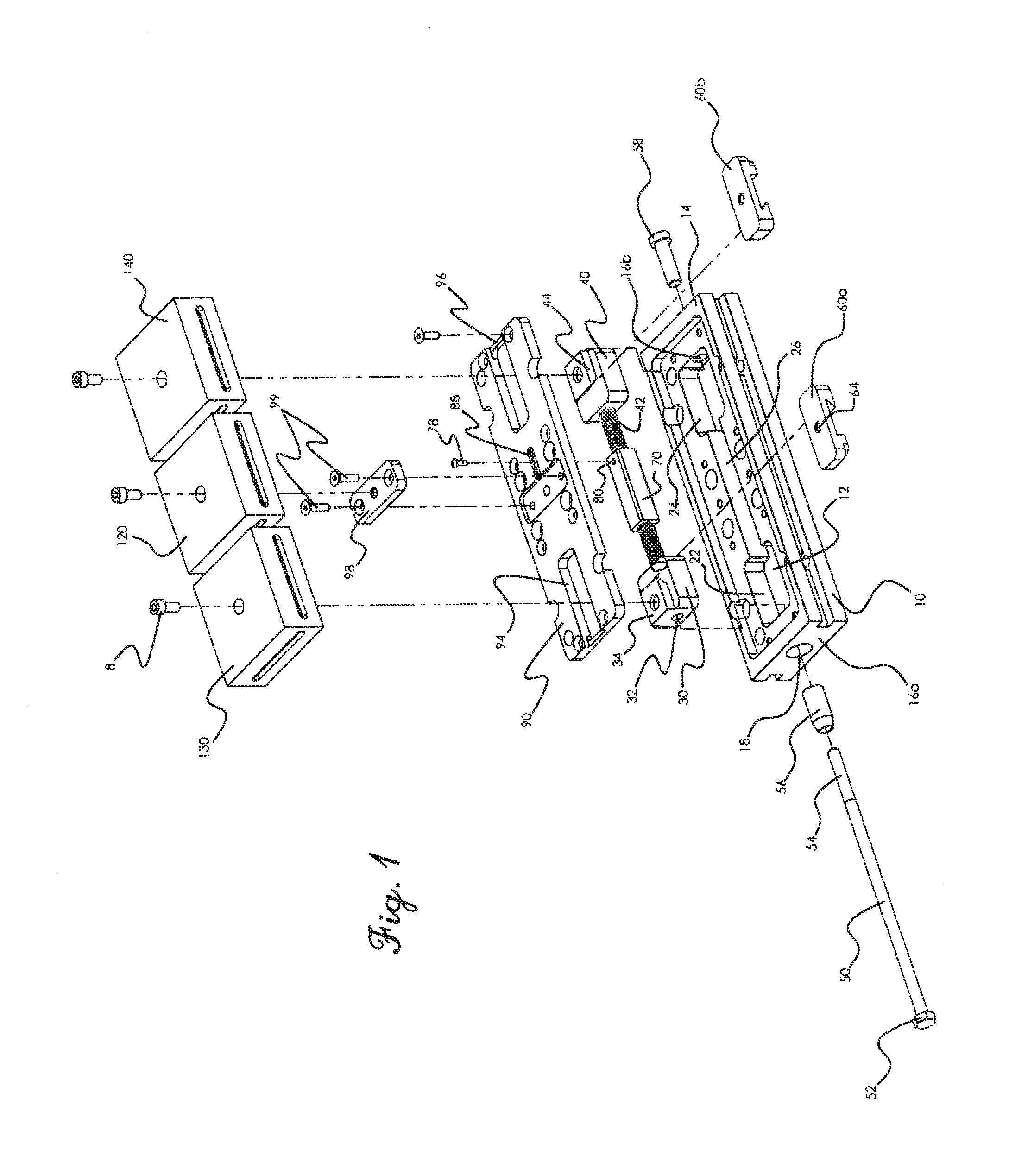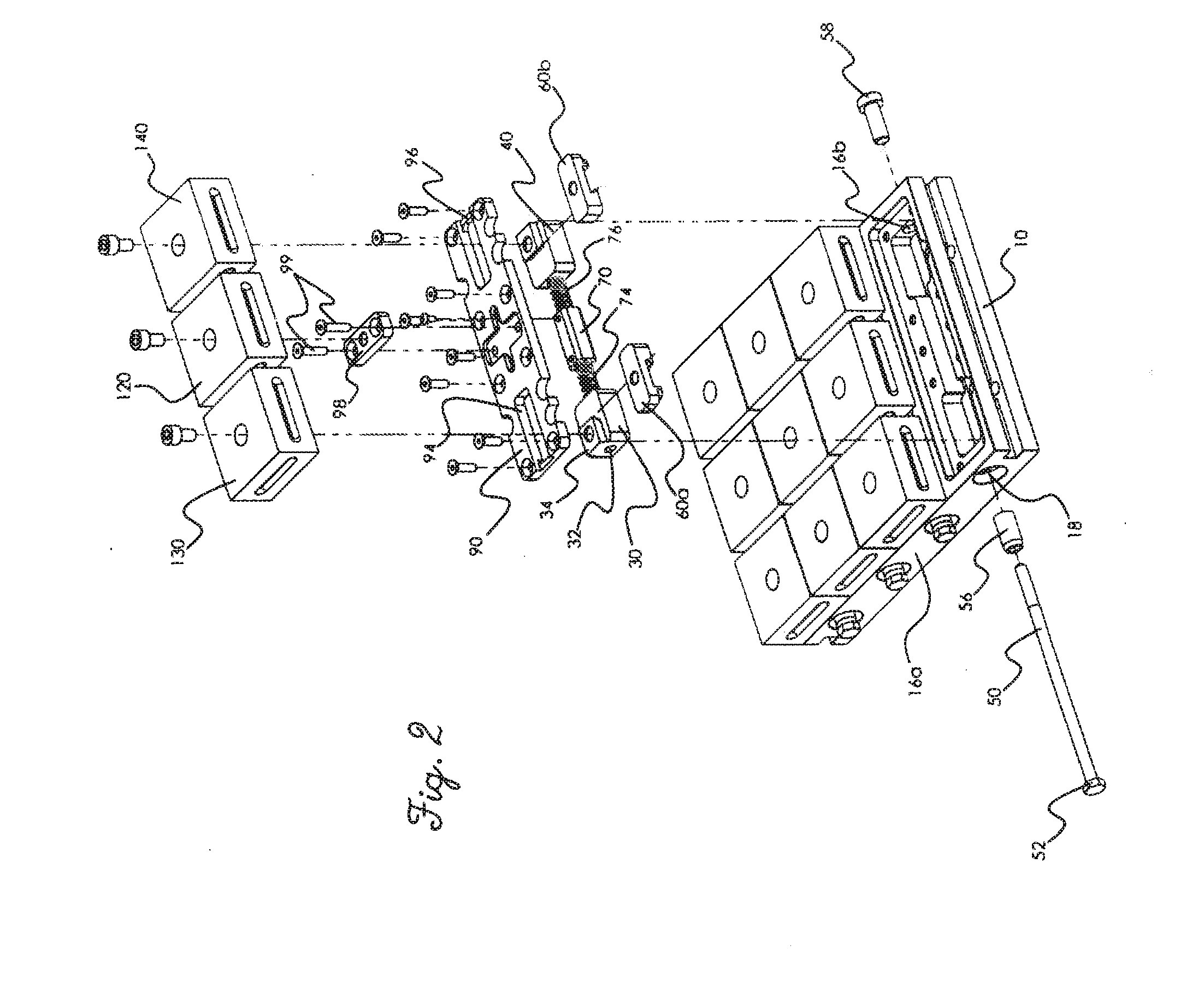[0007]Provided herein are multi-station machine vises that may utilize soft jaws, which in one aspect are symmetrical and machineable on all four sides. The jaws being identical in size and configuration makes them interchangeable /
usable on any vise station, which results in reduced operating costs. In a further aspect, the movable jaws are precisely located and fastened to the vise utilizing a jaw carrier, which incorporates a pull-down action to eliminate jaw lift. The jaw carrier includes a downwardly positioned wedge design that engages a corresponding wedge on a slide that moves the jaw carrier and the jaw. Incorporating the pull-down mechanism into the jaw carrier disposed between the slide and the jaw allows for simplifying the design and manufacture of the jaws.
[0008]According to a first aspect of the invention, a machine vise is provided that allows for substantially eliminating jaw lift caused by tightening a movable jaw relative to a stationary jaw while an element is compressed between these jaws. Typically, the vise includes a base having recess that defines the longitudinal axis. The bottom surface of the base also defines a
reference plane. A stationary jaw is removably mounted to the base. The stationary jaw is typically mounted relative to a top surface of the base above the recess. A first slide is disposed in the recess for selective movement along the longitudinal axis. A drive screw or other
actuator may effect movement of the first slide. The slide is utilized to move a jaw to and away from the stationary jaw. More specifically, the slide includes a body and a slide carrier head that extends above the body. In this particular arrangement, the slide carrier head includes an
undercut lip. A jaw carrier is also provided as a recess in its lower surface that is sized to receive the slide carrier head. This recess includes an overcut lip for complimentary engagement with the
undercut lip of the slide carrier head. This first jaw carrier also includes an upper surface having an outside
peripheral edge. A first jaw of the vise has a recess in its bottom surface that is sized to conformably receive the outside
peripheral edge of an upper surface of the first jaw carrier. The complimentary engagement of the overcut lip with the
undercut lip, which is sometimes defined as wedge surfaces, provides a pull-down effect between the slide and the jaw carrier as the vise is tightened. The conformal fit of the jaw carrier into the recess in the bottom surface of the first jaw transfers the pull-down effect from the jaw carrier to the jaw without the jaw requiring an undercut recess in its bottom surface.
[0010]Due to the simplified nature of the recess in the bottom of the jaw, the jaws are very easy to manufacture. That is, unlike a jaw having an undercut recess in its bottom surface that requires more complex milling, the substantially perpendicular edge surfaces of the recess permit the jaws of the present aspect to be readily machined. This allows most machine shops to readily and efficiently produce their own replacement jaws for the vise. That is, unlike soft jaws that utilize specialized undercut recesses to provide pull-down effect, here the pull-down effect is provided between two parts of the vise. Specifically, the pull-down effect is provided between the slide and the intermediate jaw carrier. Accordingly, the slide and the jaw carrier may be made of very durable materials such as, for example, stainless steels. This permits the soft jaws to be produced of much softer materials such as aluminums and mild steels.
[0012]In one arrangement, the vise is a multiple station vise where first and second movable jaws move relative to the stationary jaw. These jaws may be disposed on opposing sides of the stationary jaw and may operate together to clamp one or more work pieces between the respective movable jaw and the stationary jaw. In such an arrangement, a second slide is disposed in the recess that engages a second jaw carrier that is received within a recess in the bottom of the second jaw. The second slide may include a head having an overcut lip that is received within a recess in the second jaw carrier having a complimentary undercut lip to provide pull-down effect for the second jaw.
[0017]The selective movement of one of the jaws in relation to the other provides what may be termed as a “third hand.” That is, a user may selectively open one of the jaws prior to opening the other jaw to facilitate removal and / or engagement of elements within the machining vise.
[0019]In a further arrangement, the use of the drive screw which passes through one of the slides without threaded engagement allows for fixing the position of the slide having the threaded aperture to transform the multi-station vise into a
single station vise. For instance, in one arrangement a threaded element (e.g., bolt or screw) may extend through a second end of the vise and engage the slide that is in threaded engagement with the drive screw. Accordingly, this slide may be affixed relative to the base such that the subsequent turning of the drive screw only moves the slide with the non-threaded aperture.
 Login to View More
Login to View More  Login to View More
Login to View More 


